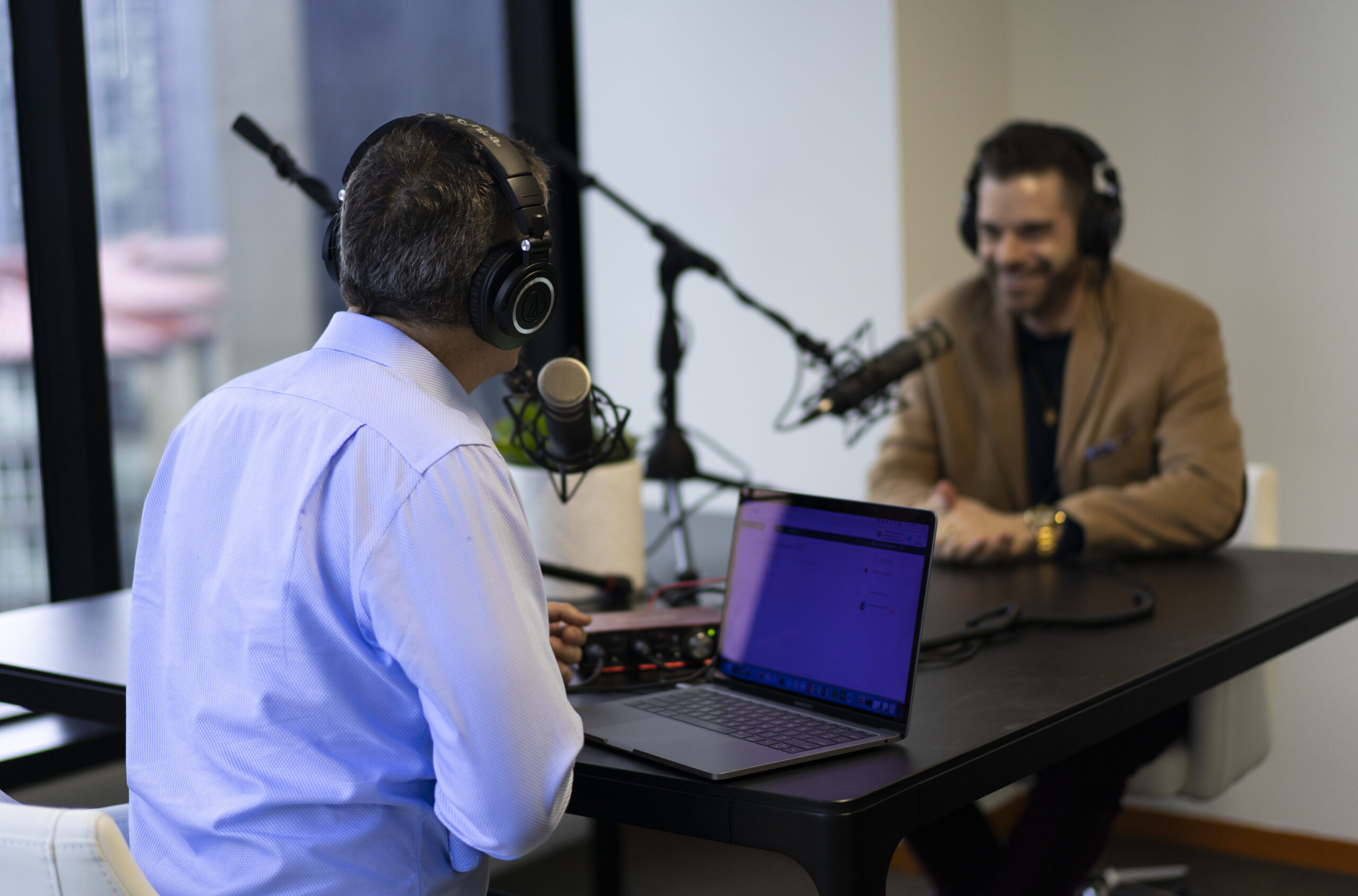Olivia Fuller: Hi and welcome to Book Club, a Sales Enablement PRO podcast. I’m Olivia Fuller. Sales enablement is a constantly evolving space and we’re here to help professionals stay up to date on the latest trends and best practices so they can be more effective in their jobs.
If you’ve ever worked in B2C industries, you’ve likely heard some variation of the mantra that the customer is always right, and really the core meaning behind this phrase is that the needs of the customer should be the top priority for the employee. Really setting that expectation that the customer is at the center of the business model. In today’s economic landscape, these expectations continue to trickle even more so into the B2B world. Having this customer-centric mentality is a place where sales enablement can really play a crucial role in helping revenue teams understand the importance of customer-centricity to drive loyalty.
I’m so excited to have Jim Tincher, the author of Do B2B Better, here to tell us a little bit more about this concept that he outlines in his book. Jim, I’d love it if you could just take a second to introduce yourself, your background, and a little bit about your book to our audience.
Jim Tincher: Thanks, I’ve always been a customer-focused kind of guy. My first job out of college, I remember that first summer going to my boss and saying, Hey, I’m visiting my girlfriend, my now wife, in Connecticut. I asked my boss if I could visit a customer while I’m there. He gave me this look like, why would you wanna do that? In fact, he asked me, why don’t you just go on vacation? I thought that’s what people did. Just go and visit customers, find out what they want, how they use your products, and how you can serve them better.
I have since learned that’s not what most people do, but that’s what I want to do from the very beginning. Since then, I’ve been with lead customer trade programs at Best Buy, and UnitedHealth Group, and nine years ago I started the company Heart of the Customer, where we really help, especially B2B and B2C firms understand more about their customers and how to create an outcome where customers want to spend more, stay longer, and interact in ways less expensive to serve clearly from your group. Spending more is probably the one area of most concern, but all three are important.
About three years ago now, my team and I were sitting around and we noticed something that nearly every company we work with says. They’re customer focused, but some are much more customer-focused than others, and some organizations are able to really build everything they do around the customer, but most can. Everybody has customers as a top priority on the wall or some variation of that, but in some organizations, they actually make decisions around understanding what customers want and need, whereas most don’t, they operate internally, and we wanted to understand what separated those two types of customers.
We ended up identifying what we call change makers versus hopefuls. The hopefuls might be doing good work and they hope it helps their customers to want to buy more, stay longer, and interact in ways less expensive to serve. The changemakers could prove it. They could show they were growing through the customer experience. We did over 200 hours of interviews, surveyed hundreds more to get to the bottom of what it is that great companies are doing, and that’s all in the book, the four actions of a change maker. It’s called Do B2B Better and it’s the four actions that change-makers take to ensure that they really are solving customer needs.
OF: That’s fantastic. Thanks so much for that background and context too. That’s so helpful to hear about how the book came to fruition. Something that I love that you talked about in your book is really how customer loyalty is the key to a thriving business. I think that is so critical, especially today with the economic climate that we’re in. I’d love to hear your perspective about why this is so important, especially for B2B organizations, and especially given the times that we’re in today with the economic landscape.
JT: Both of those are critical and customer loyalty is the foundation of organic acquired growth and is important for many company strategies. I’m not knocking that, but every organization wants organic growth as well, and that comes from building your decisions around what customers need. Customer loyalty isn’t about programs to reward customers. It isn’t about throwing money there. It’s not about customers being happy. Well, that’s part of it, but it’s about understanding what is it that motivates your customers to want to work with you more.
Why should they call your company first when they have a need? That’s what the great companies do, is they build it around. They understand what customer values most and so that’s what it takes to build a thriving company in any economy, but even more so now. Now is the time when it does seem like we are in a down economy, or at least entering one, that’s when customers are likely to bolt. It’s even more important now to understand what motivates your customers so you can build programs to get them to want to stay with you.
OF: Absolutely. I love that perspective. You mentioned how B2B companies can often lag behind B2C companies in terms of prioritizing and really providing exceptional customer experiences. You mentioned that a little bit in your intro as well. I’m curious to learn about why that is and maybe what some of the unique challenges that B2B organizations face are.
JT: You bet. Now a part of it certainly is, but it’s a lot more than that. If we go back to my time at Best Buy, if you wanted to go visit customers at a store, it was easy. I did it all the time. It drove my wife crazy, by the way, but I’d always go to the store when we were visiting a new town. I’d go check out Best Buy. It’s easy to see the customer experience at a B2C company.
It is not so easy in B2B. I led the nation’s largest line of health savings, and that was fun. I came in as a product manager and the first thing I realized is that nobody in our marketing or product development group had ever met a client because it’s a lot harder. You can’t just knock on your client’s HR group and come in and say, can I watch you for a day? That’s kind of creepy, and so it’s not so easy to exceed the experience firsthand in B2B. It takes deliberate effort, and I put together a program called Hug Your Customers to take our employees out, to hear from customers firsthand.
Olivia, two big learnings about why you don’t want to call it that. So first of all, one of the sales reps used ‘hug your customers’ while talking to a customer, and that was just weird, and second of all, Minnesotans, we don’t hug. It was just a bad name. We changed it to collecting best practices, which was not as memorable but didn’t get us to those weird problems. We went out there and I took people out to hear from customers.
One of the things we learned was fascinating and painful. We looked at our clients that were the most successful with our product, that when people were eligible for a health savings account, they opened it, they had bigger balances versus those that were less successful. What we have found out is that really successful companies were the ones who ignored all of our advice and who didn’t use our marketing materials. That’s a hard lesson to learn, but the reason was that we were building the materials and the advice that we wanted, but we knew too much, and that’s the problem, especially in B2B organizations, is that you know too much about your products and your processes.
One of the things we learned was that the number one thing that was frustrating customers was, how do I log into the website? We didn’t have that problem. We logged into the website every day. We didn’t forget our password. Our clients logged in twice a year, and if they forgot their password, they had to enter the 14-digit number that we sent them when they first got their health savings account. Because we weren’t spending time with our customers, we didn’t understand what they really needed. I see the same thing with software companies, for example, that they know too much about their software and they’re really good at it.
In one of our clients, if you forgot your password, you had to send an email and they responded with an automated message saying, we’ll get back to you within 24 to 48. Well, you can’t be locked out of your operational software for one to two days, but they never had that problem, so it wasn’t a priority. It’s a lot harder in B2B to really understand what it is that your customers do and how they really use your software.
OF: Absolutely. With some of those in mind that you mentioned in the customer experience, specific to B2B companies, I’m curious if you can maybe walk us through just a couple of those that you recommend on how B2B organizations can really overcome some of those common challenges to customers.
JT: It starts with clearly getting a better feel for your customers. This is going to surprise your B2B listeners, which is probably all of them, we found that one of the most important things to understand is your customer’s emotions. Now, you try asking somebody to understand the emotions of the procurement manager, hey, that’s hard, but you know what? Procurement managers have emotions too. It might be hard to understand that because we get in this habit of thinking it’s only about dollars and cents and what rate you give them and those matter, no question about it. What we find is that if you can understand the emotions driving their decision, you might be able to gain a few points. You can increase your order velocity.
For example, UKG is one of the case studies in my book. They are a provider of payroll and other HR benefits-type software. They’ve learned that their emotional North Star is confidence. If they can create confidence in their clients, and again, they’re a software company, then those clients will stay longer. They’re more likely to purchase additional modules. They also have a reduced cost to serve. Now, they also measure frustration and six other emotions as well. As you would have guessed, if a client is frustrated, well then they’re far more likely to be and have a high cost to serve because what we followed is a frustrated customer will call your support center, get an answer, and then they’ll call a second time to make sure they got the right answer the first time.
Well, that’s, that’s horrible. I mean, it’s annoying for the client, but it’s also expensive for you. And then what happens? They get a different answer the second time. Oh, confidence is shot and they are angry. So by measuring their emotions and designing for the right emotions, UKG was able to drive loyalty because they were designing it with the emotions customers want.
Gartner just came out with some research about a year ago that showed when they looked at, if you want to create a high-value B2B deal, what you need to do. One of the challenges in most B2B purchasing processes is that there’s not a lot of great data. There’s lots of data, but it contradicts each other. If you want to buy a widget manufacturing or software management platform, you can find all kinds of information from all the providers who are all trying to spin it their way, and it’s hard to figure out who’s the best. What they found are the two factors that best predicted a high-quality deal from both the vendor and the customer side was, first of all, confidence in the information of that client.
If the client was not confident in the information they were given, then they offered to do a lower-value deal and they wouldn’t give all the resources necessary to make it successful. The second factor was trust in the person giving the information, so you need to have great information from your client’s perspective. You need to be presenting that with somebody who they can trust a high-quality sales rep, for example. Again, it’s coming back to those emotions clients feel, which is weird in the B2B space.
My favorite example here would be Dow, the chemical manufacturing company. We were with them on understanding the complaints journey and how to. Now, when I first met their Chief Commercial Officer, and he wrote the forward to my book, he told me, Jim, my goal is to create a complaints journey that’s enjoyable. So wait a minute, let me see if I have that right. It’s not easy, not effective. Enjoyable. He said, yeah, that is exactly my goal.
Now, Dow doesn’t use the net promoter score. They don’t use customer satisfaction. They measure three things, how easy is it to work with Dow? How effective is it to work with Dow, and how enjoyable is it to work with Dow? Their research shows pretty clearly that if you say it’s effective to work with Dow, you don’t really change your ordering behavior, even if you say it’s easy there’s a lot of focus on creating effortless experiences. It doesn’t change the client’s behavior, but if a client says that it’s enjoyable to work with you, then their behavior changes, they order more often, order velocity increases, they order more products, and they’re far more likely to hit the home run, which is they work with Dow to create new to the world products.
They do joint innovation, so understanding the client’s emotions is one of the big opportunities in B2B, and I’m starting to hear more and more from it starting with B2C. Fidelity is measuring if you have a transaction with them, they ask you about eight emotions. Delta is asking how comfortable you are on your flight. We’re starting to see B2C change and if you want to get ahead of the curve, it’s time to start measuring your client’s emotions.
OF: I love that advice, and that focus on emotion, as you mentioned, is maybe something that’s a little bit unnatural for B2B business leaders. I’m curious, how do you coach leaders to start to take that customer-centric approach to their business strategies, especially in focusing maybe a little bit more on emotion?
JT: The first thing is you can’t come to your finance team and say, we want to create enjoyable experiences for our clients because they will look at you cross-eyed. What you have to say is that when we’ve done the analysis, we see that when clients say it’s enjoyable, their order velocity improves by 5%, or they are ordering 1 to 2 more products per quarter than those who say it’s not enjoyable of similar size. You can’t just decide this is the emotion you want to create. You actually have to measure those emotions and tie them into financials.
Now I know it might seem weird to say, how do we turn enjoyability into a financial metric? It’s doable. Dow does it. We do it with clients, but you have to do that or when you try to engage a broader organization, they’re not going to buy them. You have to show why it helps your team accomplish its goals. To create an enjoyable experience, and that ties from one of the other findings from the book, which is that great programs use deliberate change management. They help engage the entire organization around emotions. We’re about to understand, again, confidence.
In the case of Hagerty, a B2C company, theirs was happiness. Dow’s was enjoyment. I was at a conference last week and I was talking to somebody from manufacturing and she said, I’m still trying to get my head around emotions in the B2B experience. It just doesn’t make sense to me. I told her, in your personal life, let’s say it’s time to buy a cell phone and you choose a bad one, it’s always breaking down, okay, you’re annoyed, but if you’re buying, let’s say software or you’re selecting a provider of mission-critical product, and you make the wrong choice, you could be fired.
Emotions are a big deal to B2B experiences. We just don’t think of it that way, but those same people who are deciding to get the extra big ice cream at home are also deciding on how to, whether your soccer is the right one. They don’t shut off their emotions. They come to work. It’s more complex. Emotions are just a part of it, but there are parts of it your competitors aren’t considering. To me, the big marketplace in B2B is getting ahead of your competitors, understanding your customer’s emotions, and deliberately designing programs to help create the right emotional outcomes.
OF: I love that advice on the deliberate design of your programs. For our listeners, many of them are sales enablement leaders and sales enablement practitioners, that is really, where their role can come into play here in helping to design those programs and helping to also guide that change. I’d love to hear your perspective. What do you envision as sales enablement’s role that they can really play in helping to improve customer loyalty and also how they can help reinforce a customer-centric mindset among revenue teams?
JT: What we do with our clients is we take them out to interview clients to start collecting what they are saying now. They don’t say, I felt confident. I enjoyed working with Dow. They don’t use that language, but they do talk about their emotions indirectly. Start with that information as you talk to your clients. Record that and use that as a way of training showing how this outcome over here is that this is one of our better clients. Notice how they describe it. Notice how they describe working with their sales rep. Get that as sales enablement. Get that content so you can coach your teams around this is what it looks like, this is the emotion we create. Similarly, interview clients that are not having a great experience so you can hear their emotions and what’s driving them.
For example, I’m working with a company right now that got their job 98% done and did give me the last few pieces of information a month and a half ago. I now have to follow up with them on a weekly basis trying to get them done. That’s frustrating. I’m never going to use them again. I’m going to give them negative recommendations and they don’t know it because they’ve never asked me. Make sure you are asking your best and your worst clients. Worst clients is a bad term, but your best and your not-so-best clients about what it’s like working with you.
Use surveys, but also use interviews and then get that information in. It’s raw, unedited, well cut short, but show those emotions your clients are feeling about you and use that to get your teams to really understand that yes, that VP of Procurement actually does have emotions and that you as the rep can create either positive, negative, or neutral emotions. What’s it going to be?
OF: That is fantastic advice. I love that. To close, Jim, I’d really love to hear about your predictions for the future of the B2B business landscape and the next year or even beyond. How do you think sales enablement professionals can help organizations keep pace as things are changing in the next year and beyond?
JT: Well, the XM Institute has shown the maturity of organizations in understanding the customers acting against those results and it’s starting to improve. Two years ago, about 65% of companies were at the lowest level. Now that’s down to 40 percent as most companies have moved up to the second level of maturity. What that means to your listeners is that your competitors are getting better at understanding customer needs and acting against them, but I guarantee they haven’t figured out the emotions yet, and that’s your opportunity to leapfrog.
Start to work with your customer experience team, your customer success teams with customer excellence teams, and your customer something teams who are measuring your client experience and get them to think about the emotions and how we measure that and then distribute that results to all of your sales teams. They understand that when we create confidence in our clients, that’s when they buy more from us. That’s when they stay longer, and as well as they actually interact with the way it’s less expensive to serve because they don’t feel annoyed and frustrated, which drives those outcomes. By getting ahead and helping your whole organization think about the emotions your customers feel, you can leapfrog the competitors, drive up sales, and drive up that organic growth that we’re all looking for.
OF: Fantastic. Jim, thank you so much for sharing all of this insight with our audience. I know I learned so much from this conversation and I can’t wait for our listeners to hear it and check out your book as well. So thank you again for joining us.
JT: Thanks, Olivia. I’ve been glad to be here.
OF: To our audience, thanks for listening. For more insights, tips, and expertise from sales enablement leaders, visit sales enablement.pro. And if there’s something you’d like to share or a topic that you’d like to learn more about, please let us know. We’d love to hear from you.





